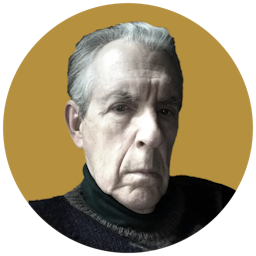The Man Behind the Museum
This article is from the archive of The New York Sun before the launch of its new website in 2022. The Sun has neither altered nor updated such articles but will seek to correct any errors, mis-categorizations or other problems introduced during transfer.

On June 27, 1829, a rather obscure Englishman died in Genoa. He carried with him a receipt for a will stipulating that the bulk of his fortune — something like £100,000 (around $50,000,000 today) — should be employed by the United States for “an establishment for the increase and diffusion of knowledge among men.”
James Smithson wrote the will himself and omitted the lawyerly language that might have made his bequest clearer. A chemist by training who published a number of narrowly focused scientific papers measuring the amount and action of minerals in various substances, and active in London’s Royal Society for the Advancement of Science, Smithson may have intended a museum of natural history — or perhaps a laboratory or school. No one knew.
And why America? Early on, Smithson expressed sympathy for the revolutionary cause, but as the illegitimate son of the Duke of Northumberland, Smithson seemed as much a royalist as a democrat, adopting after his mother’s death the name of Smithson (it had been Macie, his mother’s first husband’s name) as if to reassert his aristocratic prerogatives.
The man was a mystery. South Carolina senator John Calhoun, always suspicious of centralized power, opposed a national museum, especially one endowed by a virtually anonymous Englishman. Accepting Smithson’s bequest was “beneath the dignity” of America. John Quincy Adams, on the other hand, still aggrieved over his failure to establish a national university, led the forces that eventually prevailed in establishing an institution that describes itself as “America’s national education facility with 19 museums, 9 research centers, and over 140 affiliate museums around the world”—not to mention its display of Charles Lindbergh’s “Spirit of St. Louis” and Dorothy’s ruby slippers.
But the Smithson mystery deepened in 1865, when a fire in the newly established Smithsonian Institution destroyed his papers. Heather Ewing begins her new biography, “The Lost World of James Smithson” (Bloomsbury, 349 pages, $29.95), by making it seem that Smithson’s story has irrevocably vanished, which of course makes her heroic efforts to recover a sense of Smithson from public documents and from the diaries and letters of his friends all the more laudable.
Ms. Ewing has turned up valuable new material, bringing to light her subject’s “lost world,” but whenever his own words and papers are missing, the diligent biographer heads for quaint, entertaining tidbits — such as this description of John Graham’s “Temple of Health and Hymen,” an institution capitalizing on the public’s “newfound curiosity for electrical experiments and their ageold interest in sex”:
Visitors willing to pay an exorbitant fee could allegedly cure their infertility with a night in the massive “Celestial Bed,” in which silk sheets performed “in oriental manner” atop mattresses stuffed with the “most springy hair, produced at vast expense from the tails of English stallions.” The bed’s domed canopy, supported by forty pillars of colored glass, contained a series of artificial lodestones or magnets, providing the participants with “the exhilarating force of electrical fire.”
Remember, these were prehistoric days before you could hook yourself up to a car battery.
This is all very jolly, but in the end Ms. Ewing has to resort to the bane of all biographers: the “must have been.” She does not know much about what Smithson really thought, but she is sure about what “must have been.” The results of all her probablys and likelys are tenuous, if suggestive.
In “The Stranger and the Statesman: James Smithson, John Quincy Adams, and The Making of America’s Greatest Museum: The Smithsonian” (2003), Nina Burleigh has written a tauter, more penetrating biography. Instead of trying to stretch her data, Ms. Burleigh asks pointed questions. Why didn’t Smithson marry? Why didn’t he give his money to the Royal Society? Because, Ms. Ewing answers, he had a falling out with his colleagues. But then why not another august British institution, Ms. Burleigh asks. Her questions, it seems to me, are more instructive than Ms. Ewing’s nugatory speculations.
Smithson’s motivations remain a puzzle, though Ms. Burleigh has a final surmise of her own that strikes home. Northumberland never publicly acknowledged his illegitimate son, and Smithson knew that if he did not “specify a contingent use for his money and his nephew died, the estate would revert to the government of England.” Whatever else America was, it was a new world, one where Smithson’s name could be recognized in its own right rather than absorbed into England’s treasury.
Ms. Ewing makes a similar point, that Smithson’s life was all about seeking “identity, prestige, and progress,” but her narrative is tricked out with too many suppositions that make its arrival at that fundamental point a rather tedious affair.

